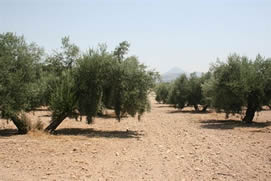Spanish groups are developing a methodology and computer platform to certify greenhouse gas emissions in agriculture. This tool will let farmers know the energy cost of producing their crops in order to help them be more environmentally friendly.
Spain’s Southern Rural Savings Bank Foundation (Fundación Caja Rural del Sur), research center Citagro and the firm Gestiona Business Solutions are developing, in a project financed by the Andalusian Technology Corporation (Corporación Tecnológica de Andalucía, or CTA), a methodology and computer platform to calculate the carbon footprint and environmental impact of agricultural products. This tool analyzes the amount of CO2 that is produced in agriculture by netting out emissions against absorption, including the effect that crops have as a carbon sink.
The CarboSiega project falls within the EU’s Common Agricultural Policy (PAC) which, as one of its challenges to be addressed by 2020, seeks to have sustainable agricultural production in order to protect the environment without undermining agriculture’s technical and economic viability.
Specifically, CarboSiega is being developed for crops using integrated production systems, which take advantage of farming practices that are compatible with protecting and improving the environment, natural resources, genetic diversity, soil conservation and the landscape.
Agricultural carbon footprint data obtained has allowed calculating the global footprint from producing crops from the farm to the table, which is highly valuable information both for farmers as well as the food industry.
